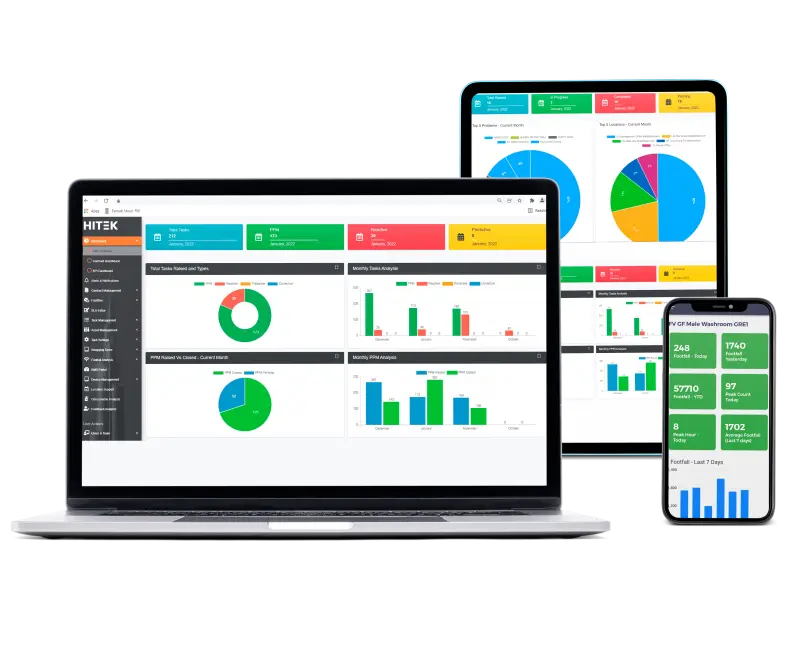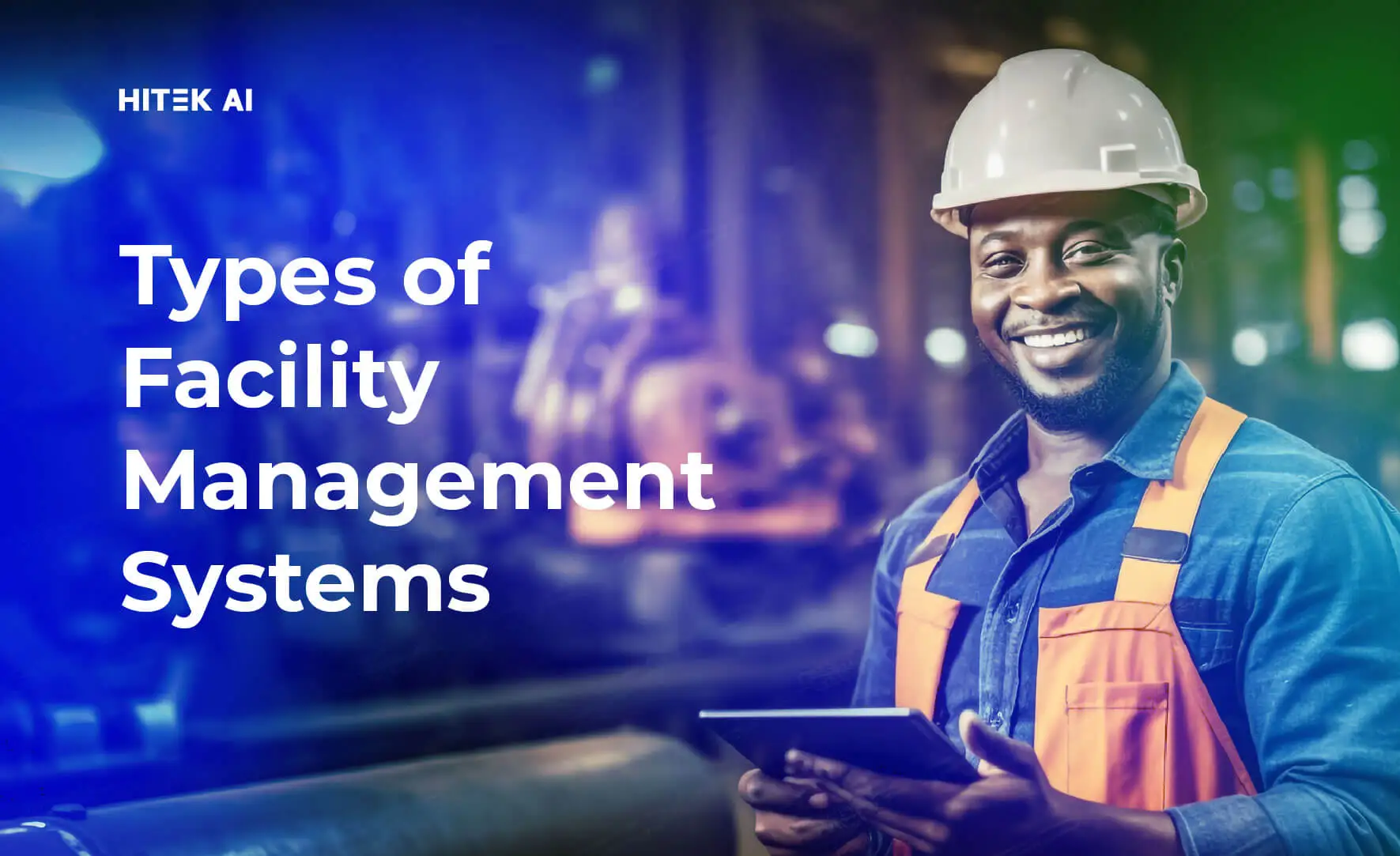Facility management has come a long way, becoming crucial for running businesses, managing real estate, and improving efficiency within organizations. Nowadays, facility managers and business owners have various systems to choose from, such as Facility Management Systems (FMS), Computer-Aided Facilities Management (CAFM), and Integrated Workplace Management Systems (IWMS).
This guide will explain each of these systems in simple terms to help you make the right choice based on your specific needs.
What is a Facility Management System (FMS)?
A Facility Management System (FMS) is a tool designed to simplify the maintenance and management of an organization’s physical assets and infrastructure. Essentially, an FMS helps businesses handle work orders, keep track of assets, and schedule maintenance tasks. These systems ensure that all physical resources are used efficiently and kept in good condition.
Core Functionalities of FMS
An FMS usually comes with several key features:
- Work Order Management: This feature allows facility managers to create, assign, and track maintenance tasks. It ensures that all maintenance activities are well-organized and completed on time, reducing downtime and improving overall efficiency.
- Asset Tracking: This important feature helps organizations monitor the status and location of their physical assets. By keeping an accurate inventory, businesses can plan future investments more effectively.
- Maintenance Scheduling: This function ensures that all assets receive regular and timely maintenance. Regular maintenance reduces the risk of unexpected breakdowns and extends the lifespan of important equipment. This proactive approach can prevent costly repairs and keep everything running smoothly.
Benefits of Using FMS
Using an FMS offers several significant advantages:
- Improved Operational Efficiency: By automating routine tasks and providing real-time data on asset performance, an FMS helps organizations make better use of their resources. For example, automated work order management reduces administrative work, freeing up staff to focus on more important tasks.
- Cost Savings: Efficient maintenance scheduling and asset tracking can lead to lower maintenance costs and reduced downtime, saving the organization money in the long run.
- Regulatory Compliance: An FMS helps ensure compliance with industry regulations and standards by tracking and documenting all maintenance activities. This is crucial for avoiding fines and maintaining a safe working environment.
What is Computer-Aided Facilities Management (CAFM)?
Computer-Aided Facilities Management (CAFM) systems enhance the basic functions of traditional Facility Management Systems (FMS) by using advanced technology and data management. These systems take a more strategic approach to facility management, focusing on optimizing how space is used and planned. CAFM provides a digital view of physical spaces, making it easier to manage and plan facilities.
Key Features of CAFM
CAFM systems come with several important features:
- Space Management: This feature helps organizations manage and allocate their space more efficiently. It offers a detailed view of how space is being used, helping businesses get the most out of their real estate investments.
- Occupancy Planning: This critical feature helps companies understand how their spaces are being utilized and identify areas that could be improved. For example, CAFM can highlight underused spaces that can be repurposed to meet other needs.
- Robust Reporting Tools: CAFM systems allow facility managers to create detailed reports on various aspects of their operations. These reports can include data on space usage, maintenance activities, and asset performance, providing valuable insights for making strategic decisions.
Further Reading: CAFM vs CMMS: FM Software Comparison
Who Can Benefit from CAFM?
CAFM systems are particularly beneficial for organizations that need to manage their space strategically. These systems help businesses optimize their real estate portfolios and improve space utilization. Companies going through expansion or reorganization can also use CAFM to make sure their facilities are used effectively.
For example, schools, hospitals, and corporate offices with large, complex spaces can use CAFM to better plan and manage their facilities.
By offering detailed insights into how space is used and occupied, CAFM helps organizations make informed decisions that can lead to cost savings and better operational efficiency.
Introducing CAFMTEK, a Computer-Aided Facility Management (CAFM) software solution that revolutionizes facility management. It helps streamline operations, optimize resources, and gain control over assets and locations.
- Key features include IoT integration, WhatsApp AI chatbot, cloud and mobility technology, and a customer-oriented FM app.
- CAFMTEK offers unique features such as mobility work order creation, security plus patrolling, and SLA-based zones.
- The software aims to improve operational efficiency through connected workforce features, IoT platform integration, and mobile app connectivity.

What is an Integrated Workplace Management System (IWMS)?
Integrated Workplace Management Systems (IWMS) are the most advanced type of facility management solution. They offer a complete set of tools to manage every part of workplace operations. By combining the features of FMS and CAFM with additional capabilities, IWMS provides a comprehensive approach to managing facilities. These systems are designed to meet the broader needs of large organizations.
Functionalities Integrated within IWMS
An IWMS includes various key features:
- Real Estate Management: This feature helps organizations manage their property portfolios, including handling leases and property transactions.
- Space Management: This allows for efficient allocation and use of workspace, helping organizations make the most of their available space.
- Asset and Maintenance Management: This ensures all physical assets are well-maintained and operated efficiently, reducing the risk of breakdowns and extending the lifespan of equipment.
- Service Management: This covers a wide range of support services, from janitorial work to IT support, ensuring all facility-related services are well-coordinated and managed.
- Sustainability Initiatives: This feature helps organizations track and manage their environmental impact, promoting energy efficiency and sustainability efforts.
By integrating these functionalities into one system, IWMS allows organizations to manage their facilities more effectively, with all data and processes centralized in one place.
Who Can Benefit from IWMS?
Large organizations with complex facility needs are the primary users of IWMS. These systems are perfect for businesses with extensive real estate holdings, multiple locations, and diverse facility management requirements.
For instance, multinational corporations, large educational institutions, and healthcare systems can greatly benefit from the extensive features of IWMS. These organizations often face complicated challenges in managing their facilities, and IWMS can help improve efficiency, reduce costs, and enhance the overall management of physical assets and operations.
By providing a unified platform, IWMS enables these organizations to streamline their operations and make informed, data-driven decisions.
Comparing FMS, CAFM, and IWMS
Choosing the right facility management system depends on various factors, including your organization’s size, needs, and strategic goals. Below is a table comparing FMS, CAFM, and IWMS based on key factors:
| Feature | FMS | CAFM | IWMS |
|---|---|---|---|
| Focus Area | Operations | Space & Strategic Management | Comprehensive Facility Management |
| Feature Set | Basic asset and work order | Advanced space and reporting | Integrated real estate, space, asset, service, and sustainability management |
| Scalability | Small to medium-sized | Medium to large-sized | Large organizations |
| Ideal User Base | General operations managers | Strategic space planners | Comprehensive facility managers |
Conclusion
Facility management systems are essential tools that help organizations maintain and improve their physical assets and infrastructure. Knowing the differences between FMS, CAFM, and IWMS is important for choosing the right system. Using the correct system can offer significant benefits, such as better efficiency, cost savings, and compliance with regulations. These systems help facility managers by automating routine tasks, providing real-time data, and enabling strategic planning, making their jobs easier and more effective.
It’s important to explore the available options and consider contacting vendors to find the best fit for your facility management needs. Investing in a strong facility management system can make your operations more efficient, compliant, and sustainable.
Selecting the right facility management system is a crucial decision that affects how efficiently and effectively your operations run. By understanding the unique features and advantages of FMS, CAFM, and IWMS, you can make an informed choice that suits your organization’s goals and needs.
Whether you need basic operational support or a comprehensive solution for managing complex facility portfolios, there’s a facility management system that can meet your requirements. Take the time to review your options, consider the key factors, and make a decision that will boost your facility management capabilities and contribute to your organization’s success.


